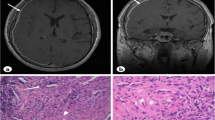Abstract:
We addressed the clinical significance of antiproteinase 3 (anti-PR3) antibody (Ab) positivity by reviewing the files of 79 patients whose serum contained antineutrophil cytoplasmic antibodies with a cytoplasmic staining pattern (cANCA) and had been tested for anti-PR3 reactivity. Vasculitis was present in most (22/35) cANCA+ PR3+ patients but in only a few (5/44) cANCA+ PR3+ patients, thereby suggesting that anti-PR3 Ab positivity in cANCA+ patients is more indicative of vasculitis than cANCA positivity alone. Noteworthy, one-third of cANCA+ PR3+ patients – those with anti-PR3 Ab titres lower than 100 U/ml – did not suffer from vasculitis. Anti-PR3 reactivity in vasculitis patients was only weakly associated with Wegener’s granulomatosis (WG), as nine out of 22 cANCA+ PR3+ vasculitis patients (41%) did not fulfil the ACR classification criteria for WG. There was no correlation between anti-PR3 Ab titres and disease activity at diagnosis. However, titres measured when patients were in remission were much lower than initial values. Taken together, our results indicate that anti-PR3 Ab positivity should be interpreted in its clinical context.
Similar content being viewed by others
Author information
Authors and Affiliations
Additional information
Received: 3 September 1998 / Accepted: 22 February 1999
Rights and permissions
About this article
Cite this article
van Pesch, V., Jadoul, M., Lefèbvre, C. et al. Clinical Significance of Antiproteinase 3 Antibody Positivity in cANCA-Positive Patients. Clin Rheumatol 18, 279–282 (1999). https://doi.org/10.1007/s100670050102
Issue Date:
DOI: https://doi.org/10.1007/s100670050102




